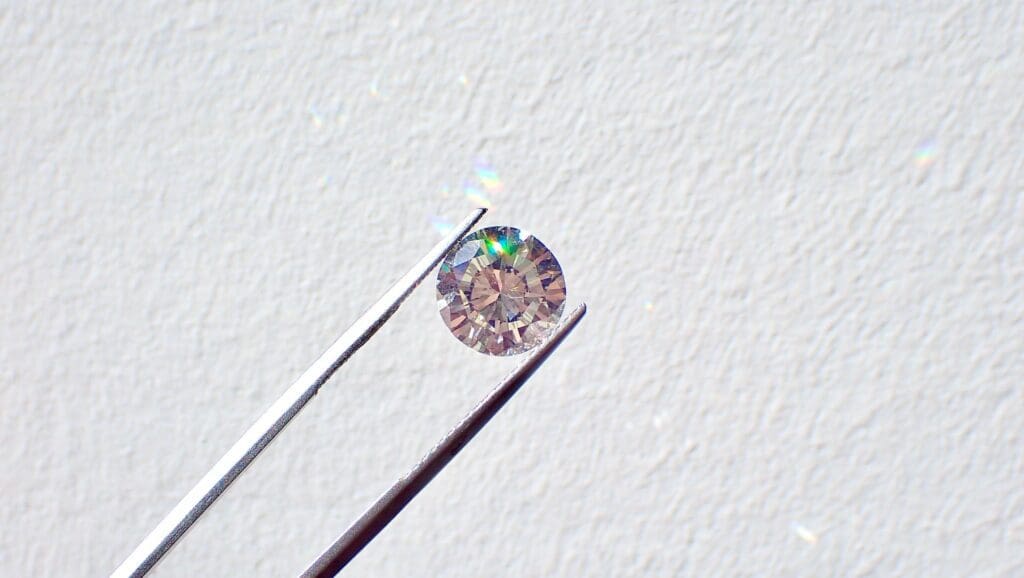The diamond is a timeless symbol of love, strength, and beauty. For centuries, these precious stones have been treasured by cultures all over the world. Here’s a look at the fascinating history of diamonds, from their humble beginnings as tools for early humans to their current status as coveted luxury items.
Diamonds have been treasured since their use was first documented in India about 3,000 years ago.
The earliest references to diamonds in India come from Sanskrit texts. Diamonds were known in India before the arrival of Europeans and were used by Hindus for personal adornment, as well as for embedding in the foreheads of statues of Hindu deities. The Indian Vedic texts – a collection of ancient religious texts composed between 1500 and 1000 BCE – make numerous references to diamonds. In one text, they are described as indestructible and so hard that they can only be cut with other diamonds. Another text compares a diamond’s hardness to that of thunderbolts, while another likens it to a spearhead. Diamonds were also mentioned in Buddhist scriptures written between 600 and 400 BCE. These texts noted that cutting and polishing diamonds was a skill practiced by certain artisans in India. By the fourth century BCE, diamonds were being traded along the Silk Road – an ancient network of trade routes that connected China with the Mediterranean world – making them available to people outside of India for the first time. It is believed that early traders obtained Indian diamonds from alluvial deposits located in central and southern India. .
It wasn’t until the 14th century that diamonds became associated with love and marriage.
In the early 1200s, Pope Innocent III established the practice of giving diamonds to couples who were betrothed or engaged. This was likely in response to a growing trend among the nobility of wearing diamond rings as a sign of their status. The pope’s decree helped solidify diamonds as symbols of love and commitment, a tradition that continues to this day. It is believed that Pope Innocent III came up with the idea of bestowing diamonds on couples as a way to symbolize their eternal love for one another. He may have been inspired by ancient Egyptian customs, which also saw couples exchanging rings made of valuable materials like gold and lapis lazuli. Whatever his motivation, the pope’s decree helped cement diamonds as tokens of affection in European society. The first recorded instance of a diamond engagement ring being given dates back to 1477, when Archduke Maximilian of Austria proposed to Mary of Burgundy with a band featuring several large stones.
During the 16th century, Spanish explorers brought diamonds to Europe where they quickly became a favorite among royalty and the upper class.
In 1725, the famous French jeweler Louis XV popularized the idea of wearing multiple smaller diamonds instead of one large stone. This trend spread throughout Europe and eventually made its way to America during the Victorian era. By this point, Diamonds had become firmly established as symbols of wealth and power. The modern diamond market was created in 1866 when a huge deposit of high-quality stones was found in South Africa.
This discovery caused a dramatic increase in global production, making diamonds more affordable than ever before.
The 20th century saw further advances in diamond mining and cutting technology. While it’s fair to acknowledge the advancements of technology, we must also note that the mining of diamonds was one of the main sources of income for the continent of Afriac, and yet the people who did the actual mining were paid very little while the owners of the mines made enormous profits. This led to much resentment among African workers and eventually to a series of revolts and rebellions. In 1904, for example, miners in South Africa went on strike to protest their poor working conditions and low wages. The strike was crushed by government forces, but it showed that the Africans were not going to put up with exploitation forever. Over the next few years, there were similar outbreaks of violence at diamond mines in other parts of Africa. Finally, in 1911, the workers at a mine in Sierra Leone rose up in rebellion against their British bosses. This time, they were successful in driving out the Europeans and taking control of the mine themselves. Although this victory was short-lived, it demonstrated that Africans were willing to fight for their rights even against overwhelming odds.
Today diamonds are no longer just for wealthy elites – they’re enjoyed by people from all walks of life around the world.
In today’s market, there are a wide variety of places where one can purchase diamonds, both expensive and inexpensive. For those looking for the best quality diamonds at the highest prices, retailers such as Tiffany & Co. or Harry Winston offer some of the best selections. However, not everyone is able to afford diamonds from these luxury jewelers. Fortunately, there are also many other great options for purchasing affordable diamonds. Some of the best places to find inexpensive diamonds include online retailers such as Blue Nile or James Allen. These companies offer a wide range of diamond products at very competitive prices. Additionally, many local jewelry stores also carry a good selection of budget-friendly diamond jewelry.

